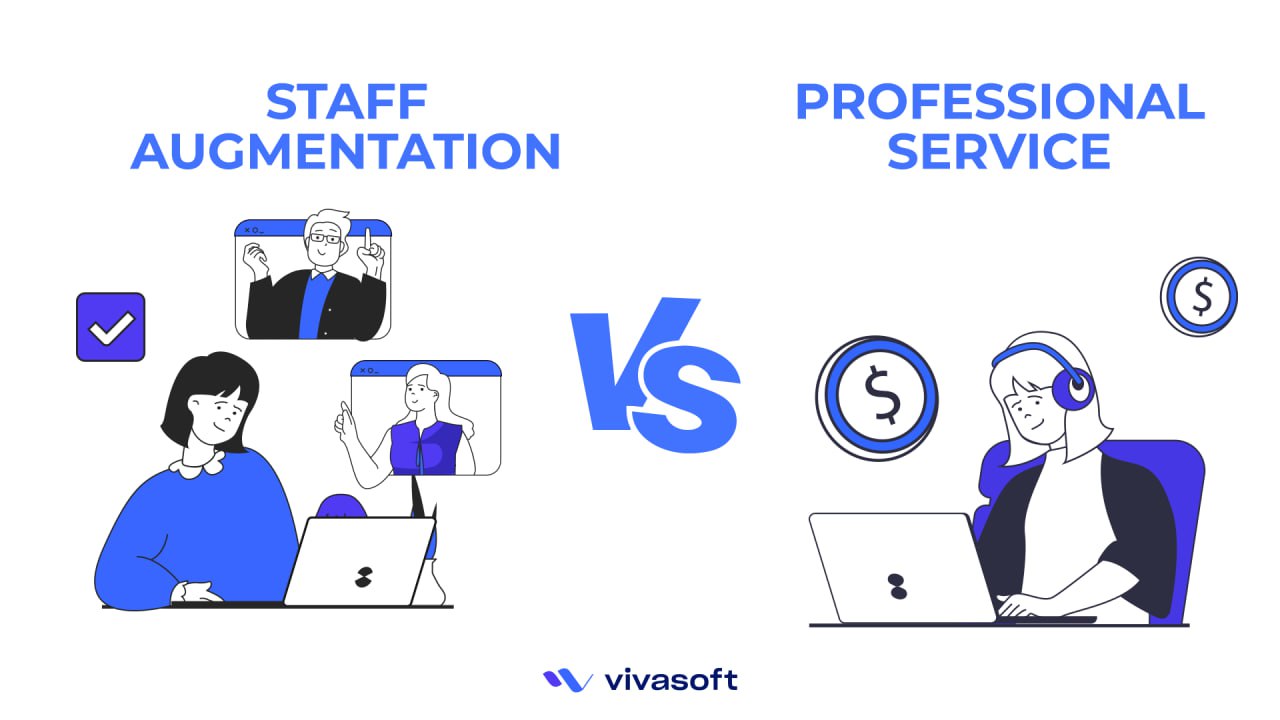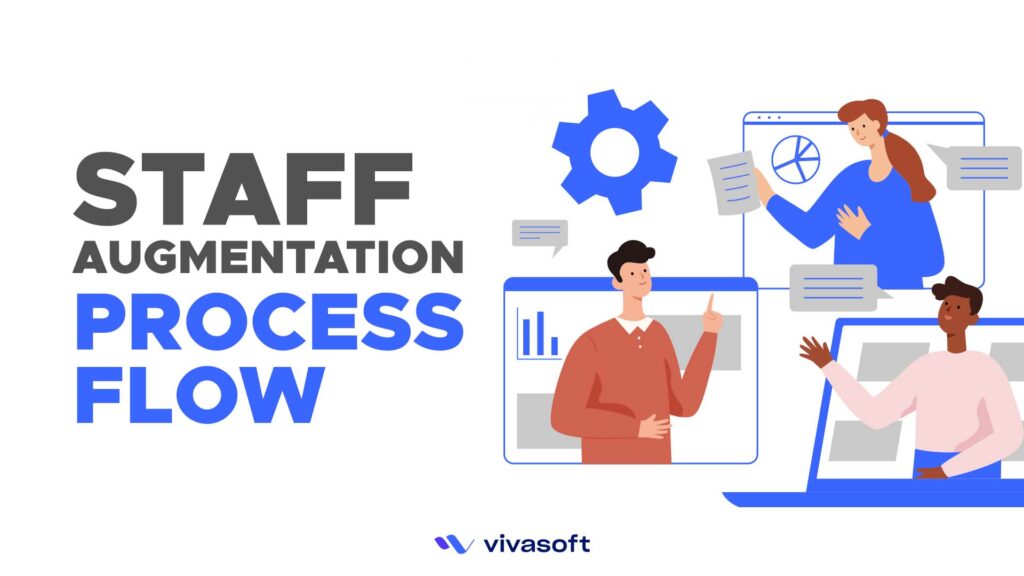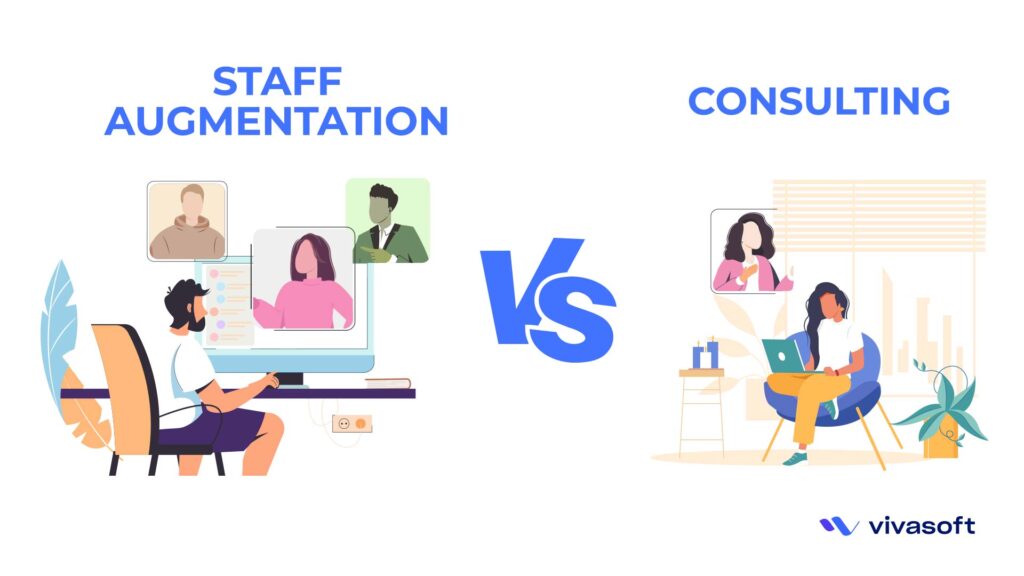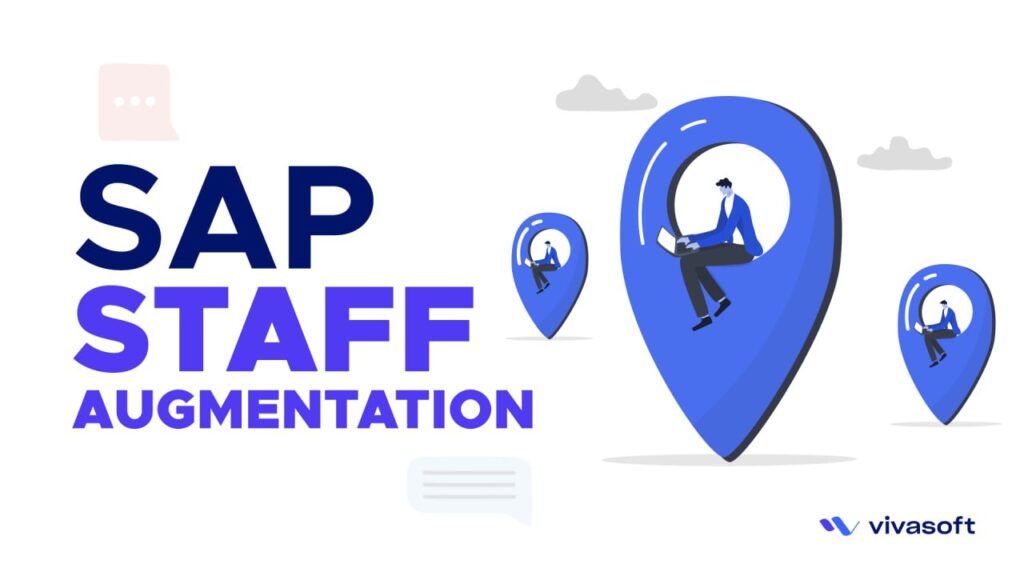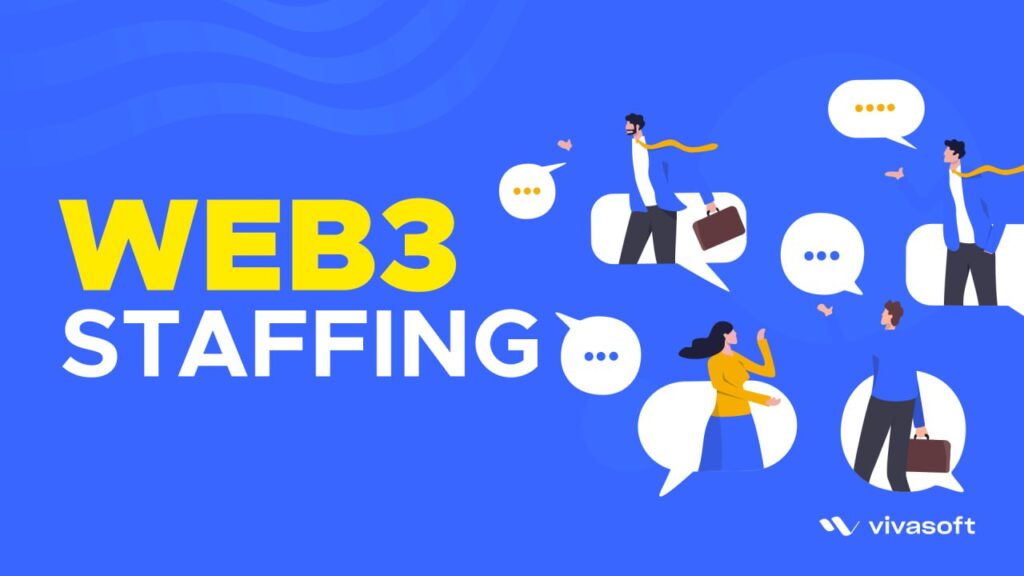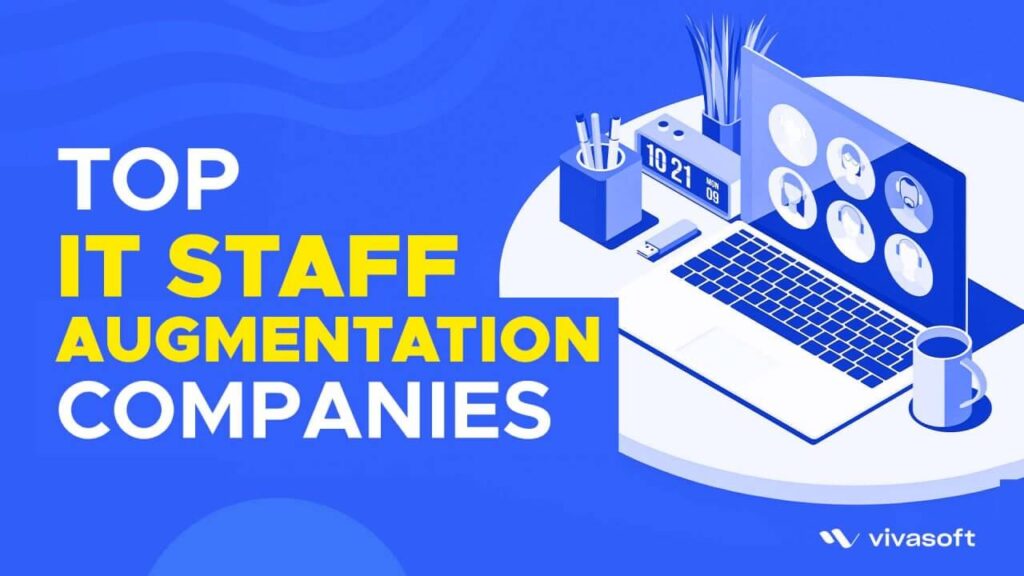Staff augmentation is a short-term option that is often used to fill in gaps in an organization’s staff or to strengthen the existing team or workforce. In contrast, professional services means working together under a contract on longer-term projects that need specific knowledge and skills.
Efficient resource management is the cornerstone of organizational success. Staffing models serve as the architects of this efficiency. There are several options available as staffing models. Each has its own characteristics for project needs. So, choosing the right staffing model determines the project success. It’s not merely about having the right staff. It is also about deploying the staff strategically. It is a key factor in achieving organizational objectives.
Staff Augmentation
Staff augmentation is a strategic workforce solution focused on short-term staffing needs. Its primary objective is to swiftly fill skill gaps or address workload spikes within an organization. It provides a flexible and scalable approach to staffing.
The core purpose of staff augmentation is to boost a company’s capabilities immediately. This staffing model strengthens the team quickly without a long-term commitment. Staff augmentation aims to adjust skills to current needs in a flexible and effective manner.
Key Characteristics:
- Adaptable staffing to meet fluctuating workloads and immediate needs.
- Avoid permanent hires by paying for services as needed.
- Swift integration of skilled professionals to address urgent requirements.
- Specialized knowledge and experience for unique projects.
- Short-term commitment without the obligations of long-term employment.
- Easily scale up or down to meet project needs and maximize resources.
- Applicable across diverse industries, notably in IT, healthcare, and finance, to meet specific challenges and project peaks.
Staff augmentation is widely embraced in various industries worldwide. Staff augmentation is popular in the IT industry because it adapts to technological changes. In the healthcare industry, it helps reinforce teams during critical periods. It is very helpful for the finance industry during tax season and audit workloads. There are other industries like telecommunications & manufacturing utilizing staff augmentation for seamless tech adaptation, network expansions, and meeting fluctuating demands.
Advantages of Staff Augmentation
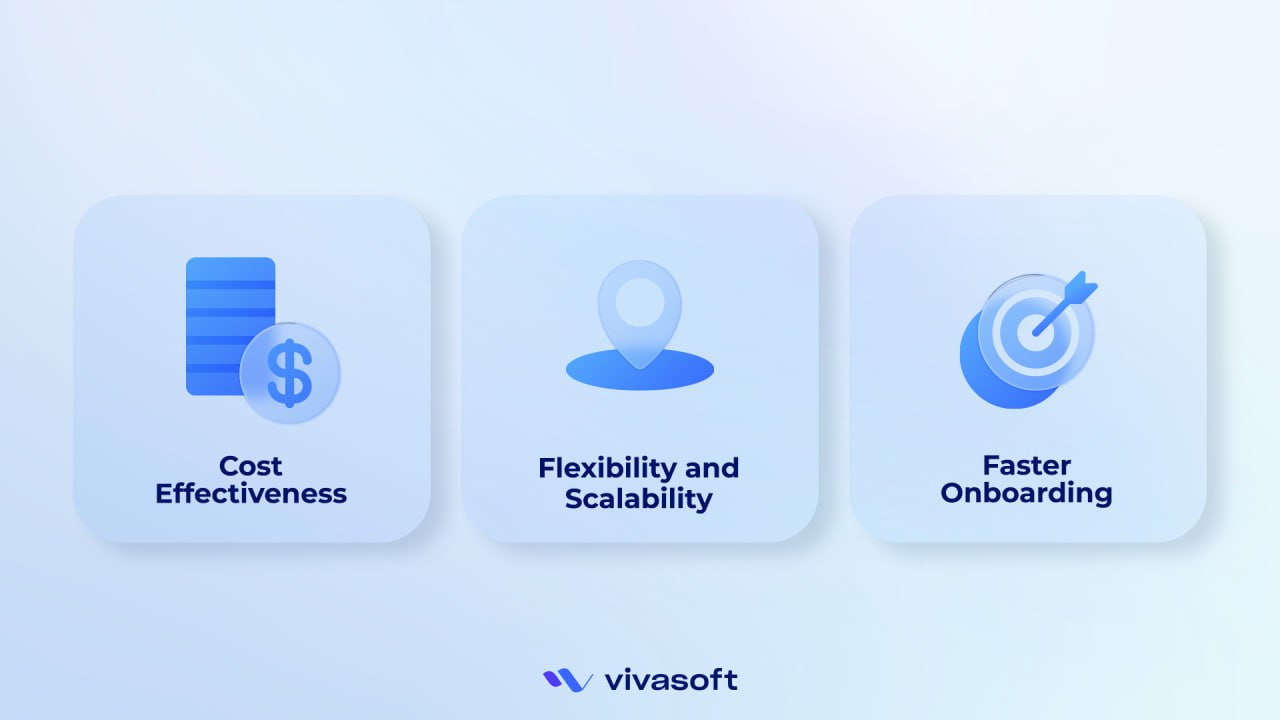
Cost-Effectiveness
Using staff augmentation is economical. Businesses only incur costs for the specific skills and duration needed. This avoids the financial commitment related to permanent hires. This makes it a smart financial choice for projects with varying workloads.
Flexibility and Scalability
Staff augmentation lets businesses easily adjust to shifting project needs. As projects increase or slow down, businesses can utilize this model to optimize resource utilization. It’s like having the perfect team size for any situation, keeping things efficient.
Faster Onboarding
Staff augmentation allows swift onboarding of skilled professionals. This agility is crucial in meeting immediate project needs. As the new staff is already trained for the specific needs, there’s no need for long training sessions. The augmented staff has the required skill set and experience to work in different environments. Staff augmentation responses faster than traditional hiring. It’s like tackling project needs without the delays of traditional hires.
Challenges in Staff Augmentation
Limited Control Over Tasks
Handling tasks can be a bit tricky with staff augmentation. Especially, when the augmented staff or team is working remotely. You might not have full control, like you would with an in-house team. It’s like overseeing a project from a distance.The small things that happen every day might not be as clear. Proper employee management & task management systems can solve this issue easily.
Potential Communication Issues
Communication can be a problem when the team isn’t physically present. Time zone & language differences can become an issue here. Everyone needs to meet at a certain time through online communication.While communicating there’s a chance some details might get lost or not come through as clearly. This shows the importance of establishing strong communication tools for effective collaboration.
Best Practices
Clear Communication Channels
Establish a transparent communication system that enables seamless interaction. Maintain a clear information flow. without any hidden gaps.
Use instant messaging, video conferencing, and project management software to simplify communication. Define the ideal platform for quick updates, thorough discussions, and project milestones. Check in regularly and encourage team members to express themselves openly. Ensure a smooth flow of information.
Defined roles and responsibilities
Make sure everyone knows their job. Clear job roles and responsibilities improve team accountability and clarity. Here’s the steps to take:
- Create a detailed roles and responsibilities document.
- Clearly outline each team member’s duties, expectations, and areas of ownership.
- Describe sensitive data restrictions.
- Regularly revisit and update this framework as projects evolve.
- Establish a feedback communication system.
- Ensure everyone stays aligned with their roles.
Professional Services
Professional services are hiring experts outside the company to handle specific, complex tasks or projects from beginning to end. Instead of providing temporary help, professional services manage projects from start to completion.
Professional services focus on complex, long-term tasks needing specialized talents. These services deliver end-to-end solutions. It is like having a full team of experts ready for any kind of project.
Key Characteristics:
- Professional services deeply engage in projects
- Professional services are best suited for long-term projects.
- Professional services provide ongoing support & assistance.
- These services combine with expertise, project management, and strategic planning for comprehensive solutions.
- A team of experts are always ready to take on projects.
- Manages tasks from start to finish.
Professional services are very popular in industries like consulting, legal, manufacturing, and marketing. Professional service providers are needed for long-term strategic situations like organizational restructuring and system integrations.
Advantages of Professional Service
Specialized Expertise
Professional services provide a group of highly skilled individuals. They are experts in legal issues, innovative technology, and strategic consultancy. Employing professional services provides access to a pool of specialized knowledge. These services are precisely designed to handle the specifics of a project. It’s like having a team of experts handle every part of your project.
Comprehensive Project Management
From project initiation to completion, professional services handle every aspect. It acts as a project manager, consultant, and execution expert all rolled into one. Professional services provide full strategic planning, execution, monitoring, and adaptation. The entire process is monitored to meet project goals and adapt to changing needs.
Challenges in Professional Services
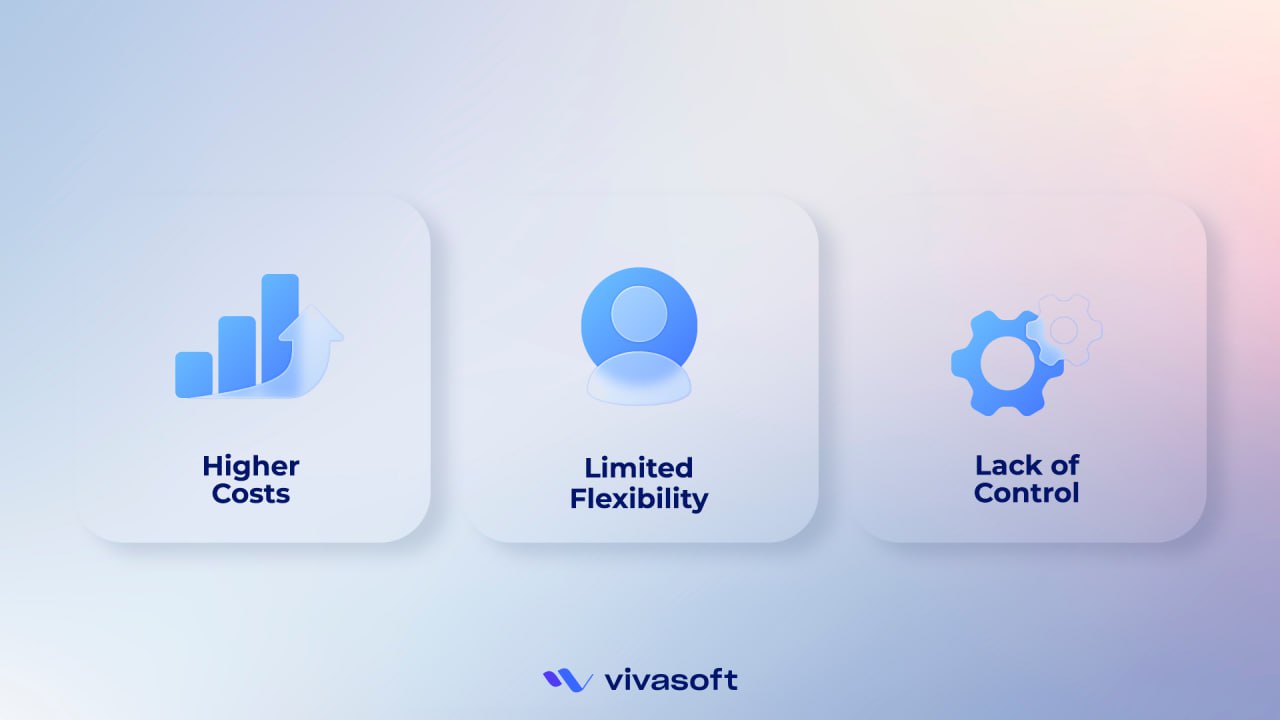
Higher Costs
Professional services are expensive compared to temporary staff augmentation. As they provide a comprehensive project completion service. The costs might be difficult for organizations with tight budgets. So, before hiring professional services it is important to measure the value obtained against cost.
Limited Flexibility
Professional services’ structure may make it difficult to adjust to changing project needs. Modifying strategy or resources might be complicated in less flexible structures. It affects project responsiveness.
Lack of Control
Hiring professional services means less control over the project. The assigned team takes full responsibilities of planning & executing. This is like giving skilled people a crucial task while giving up some control. Organizations must create clear communication channels and project milestones to maintain a sense of involvement.
Best Practices
Detailed project planning
Planning projects well is one of the most important parts of hiring professional services. It guides the interaction and manages resources, time, and client expectations. Consider these steps for detailed planning:
- Define Clear Objectives: Clearly outline project goals while hiring. Ensure everyone understands the desired outcomes.
- Break Down Tasks: Divide the project into smaller tasks with specific deadlines/milestones. That makes individuals more responsible and makes it easier to keep track of progress.
- Resource Allocation: Identify and allocate necessary resources. Consider manpower, technology, and tools required for each project phase.
- Contingency Planning: Make plans for possible problems and potential solutions. This strategy helps the team handle unexpected challenges.
Continuous Communication and Updates
Effective communication is a necessity for smooth collaboration. Maintaining open and transparent communication channels is vital throughout the entire project engagement. Here’s how to do this:
- Establish Clear Channels: Establish proper communication channels. Use updated employee management tools and platforms.
- Regular Check-ins: Schedule regular check-ins to discuss progress, challenges, and upcoming milestones. Use task management tools & softwares for regular updates.
- Document Updates: Keep regular records of discussions, decisions, and updates. This documentation will serve as a reference point, especially in long-term projects.
- Feedback Mechanism: Establish feedback mechanism between team members. This helps in gradual reporting about progress and other things.
Staff Augmentation vs Professional Services - Key Differences
| SL No. | Factors | Staff Augmentation | Professional Services |
|---|---|---|---|
| 1 | Nature of Engagement | Short-term, supplemental staffing | Long-term, comprehensive project involvement |
| 2 | Control and Management | Client retains more direct control | Service provider takes significant control |
| 3 | Cost Implications | Cost-effective for specific tasks | Higher costs for comprehensive end to end solutions |
| 4 | Scalability | Easily scalable based on immediate needs | May have limitations in rapid scalability |
| 5 | Specialized Skills | Specific skills brought in as needed | In-depth, Team of specialized skilled individuals for entire project duration |
| 6 | Duration of Engagement | Specific tasks or Short-term project engagements | Long-term, project lifecycle involvement. From Project initiation to completion |
| 7 | Integration and Dependency | Less integrated & lower dependency | Highly integrated, significant dependency |
| 8 | Customization and Tailoring | Limited customization to immediate needs | Highly customized solutions to project requirements |
| 9 | Project Complexity and Scope | Generally handles specific tasks or fill skill gaps | Handles complex projects with broader scope |
| 10 | Risk Management | Lower involvement in overall risk management | Active involvement in comprehensive risk management |
Choosing the Right Model
Choosing the right staffing model is pivotal for the success of a project. It’s like selecting the perfect tool for a specific job. Both of the models have their own characteristics. They do not always work for the same purpose. The choice depends on a number of important factors. Evaluating the project requirements, understanding budget constraints, and assessing the timeline are fundamental steps here. Weigh these factors like this:
Project Requirements
Choosing the right staffing model depends on the project’s size. Staff Augmentation works best for filling skill gaps, short-term tasks or requiring specialized skill sets.
On the other hand, if it is a comprehensive, long-term initiative with complex project management needs, Professional Services would likely work better.
Budget Constraints
Any decision-making process is influenced by the budget. Staff Augmentation is known for being a cost-effective solution. It acts better to meet immediate project needs. It is more favored when working within tight budget constraints.
On the contrary, Professional Services often come with higher costs. This staffing model provides extensive support throughout the project completion. It is more preferable for long-term project engagement.
Timeline
The project’s deadline is a very important thing to consider. Staff Augmentation provides rapid scalability and short-term engagements. It is best suited for projects with tight timelines or fluctuating workloads.
On the other hand, there are projects that have a longer duration and require ongoing support. For these kinds of project needs professional services provide the necessary solution required for successful project completion.
Real Life Case Studies on Staff Augmentation & Professional Services
The staffing model services of Vivasoft have helped complete many projects for multiple clients. Some required professional services to complete an entire project with skilled professionals. And some needed temporary staff augmentation to aid them with their ongoing projects. In both cases Vivasoft has great success stories.
Klikit - A Successful Project Of Vivasoft By Providing Professional Services
Klikit is a platform from where restaurants can manage multiple food delivery companies. The founder of Klikit, Chris, asked Vivasoft to handle the whole project.
A team of 26 expert developers from Vivasoft designed a framework for restaurants to manage orders, menu management, virtual brands, and performance analytics from one terminal for all food delivery businesses.
Chris raised $1M USD from this successful project. And now Kilkit has expanded in Singapore, Philippine, Malaysia and Australia.
Technologies used to accomplish this project are React Native, Golang, Elastic Search, MySQL, Flutter, Kubernetes, Google Cloud Platform, Kong, Redis, Socket.IO
NumberSkills - A Successful Project of Vivasoft with Staff Augmentation
NumberSkills is a Swedish company that provides power BI solutions all over Europe. Owner of NumberSkills struggled to manage company scopes. He struggled to locate resources in Sweden.
The owner decided to take staff augmentation as service from Vivasoft. He augmented a staff who is a skilled developer from vivasoft on the first approach. Being impressed with his impactful work the owner decided to continue with Vivasoft. After that Vivasoft provided more than 15 expert developers to Numberskills as staff augmentation.
Right now, this successful project has major Swedish clients like Marbit, Advania, Netigate, and Coromatic.
Technologies used to accomplish this project are Azure, ASP.NET, Vue.JS
Conclusion
Choosing between staff augmentation & professional services is a very thoughtful process. Because the project’s success depends on what service model is chosen. Make the choice based on the project’s nature, budget, and timeline.
Each model has its own characteristics & purpose. It’s best to use Staff Augmentation for quick, specific needs. And professional services are perfect for complex, long-term projects. Choose according to project details to succeed every time.




